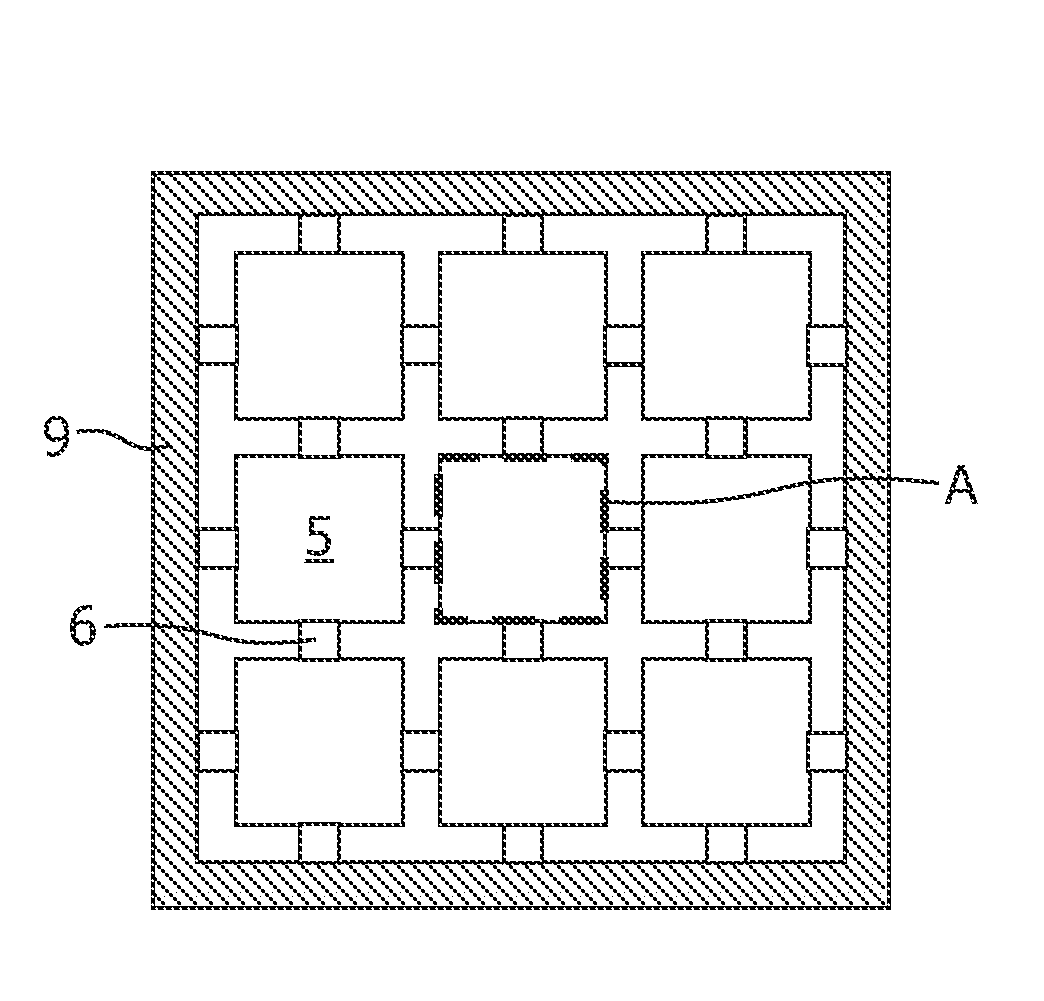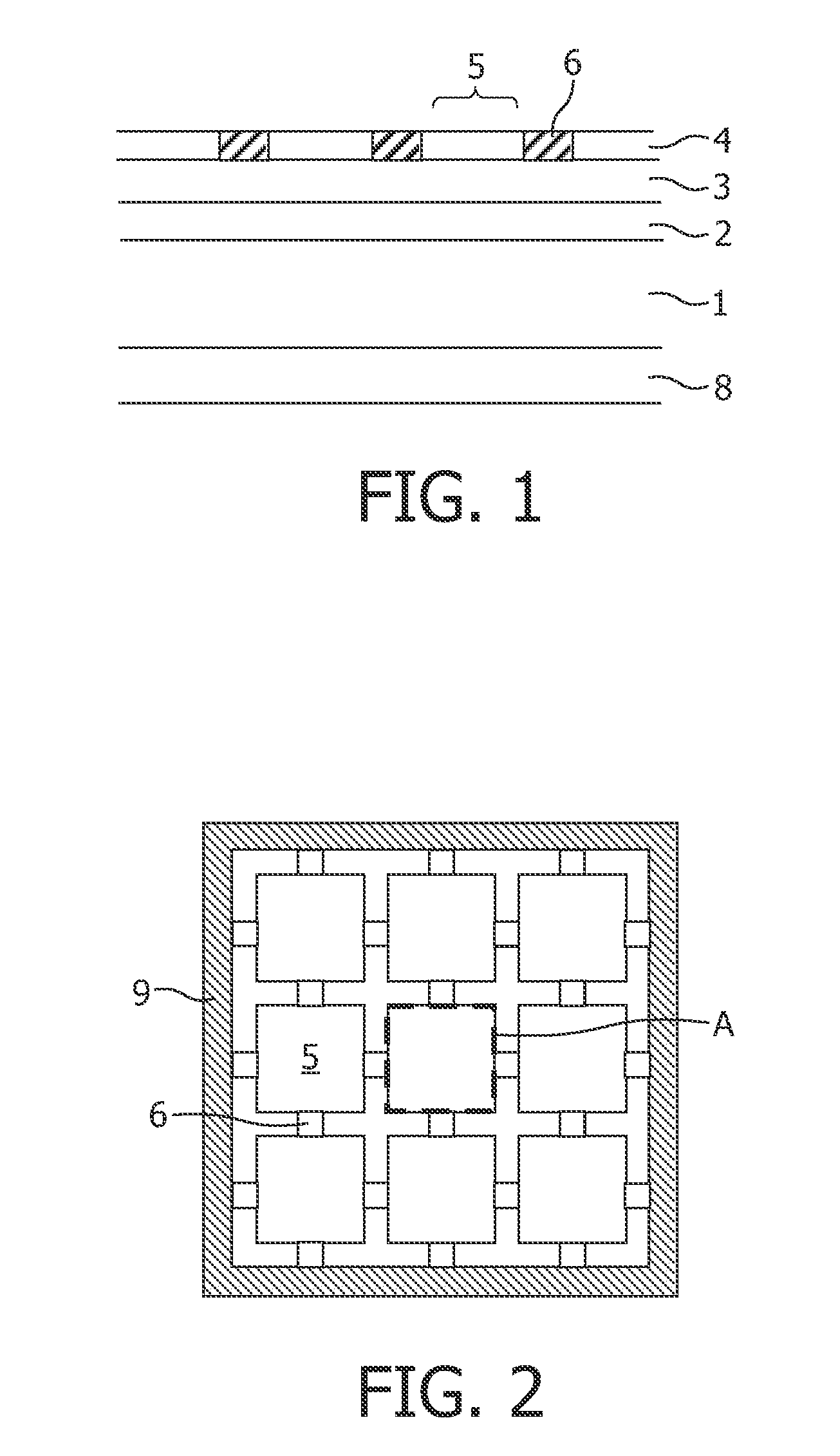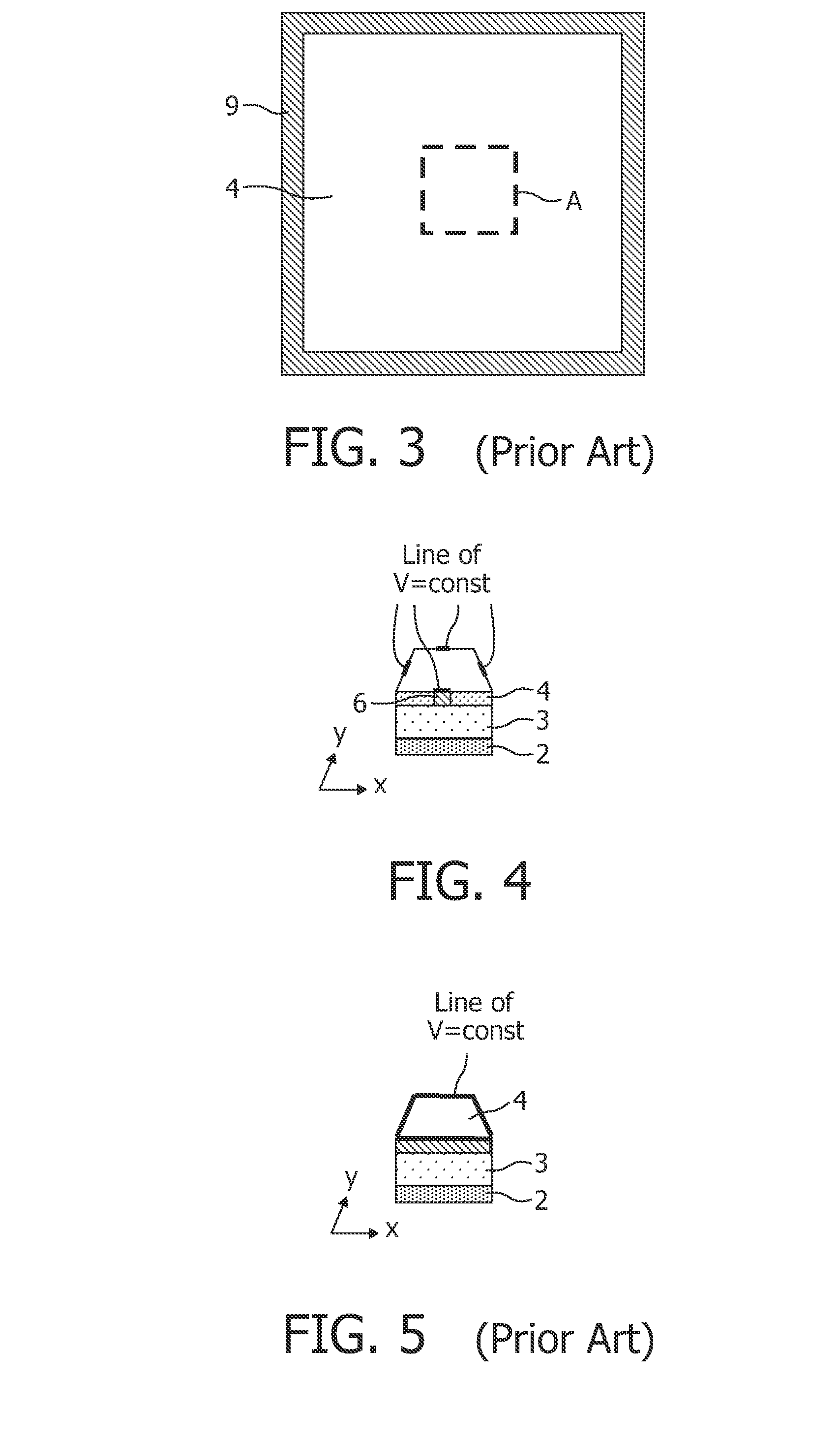Large area light emitting diode light source
a light source and diode technology, applied in the direction of organic semiconductor devices, solid-state devices, thermoelectric devices, etc., to achieve the effect of large light emitting area and without risk of failur
- Summary
- Abstract
- Description
- Claims
- Application Information
AI Technical Summary
Benefits of technology
Problems solved by technology
Method used
Image
Examples
case 1
[0042] no segmented cathode (prior art)
case 2
[0043] segmented cathode with fuse elements, no short
case 3
[0044] segmented cathode with fuse elements, with short in the center of the large segment
[0045]FIGS. 6 and 7 show the horizontal current density in the cathode layer, i.e. the geometric sum of the x and y components of the current density vector with and without fuses. The case of a short in the center of a segment is shown in FIG. 8 for an OLED with fuses according to the present invention. FIGS. 9 and 10 show a comparison of the brightness in cd / m2 across the OLED between an OLED of the prior art (FIG. 9) and an OLED according to the present invention (FIG. 10). For all cases the voltage along the edges is assumed to be constant and 5V. The fuse segments are square shaped of size 3 mm×3 mm and of the same thickness than the large segments.
[0046]Two observations can be made,[0047]1. introducing the fuse segments has almost no effect on the total current and light output. Even though only 7.3% of the edges are used for the current injection there is almost no increased light output...
PUM
 Login to View More
Login to View More Abstract
Description
Claims
Application Information
 Login to View More
Login to View More - R&D
- Intellectual Property
- Life Sciences
- Materials
- Tech Scout
- Unparalleled Data Quality
- Higher Quality Content
- 60% Fewer Hallucinations
Browse by: Latest US Patents, China's latest patents, Technical Efficacy Thesaurus, Application Domain, Technology Topic, Popular Technical Reports.
© 2025 PatSnap. All rights reserved.Legal|Privacy policy|Modern Slavery Act Transparency Statement|Sitemap|About US| Contact US: help@patsnap.com



